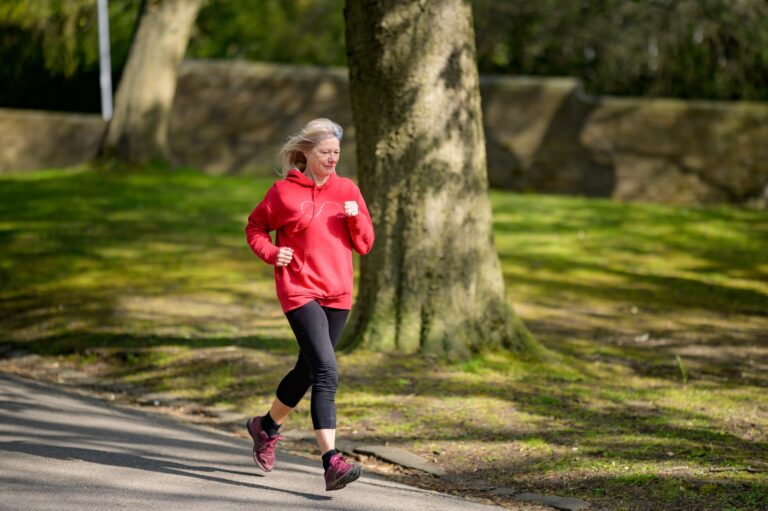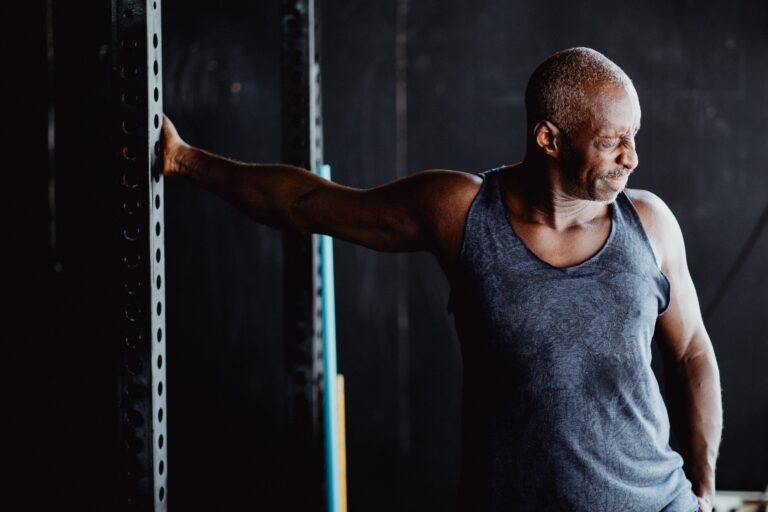The road to recovery: insights from an injured Sports Medicine ultramarathon runner
Learn how Banff Sport Medicine Physician, Dr Andy Reed, is recovering from a recent injury in his latest Bow Valley Crag & Canyon article.
In my last column I chronicled my own journey to injury.
A combination of too much racing with a lot of intensity and vertical, combined with not enough downtime between efforts and my inexplicable decision to avoid the early warning signs led to me being sidelined with Achilles pain. More precisely I have a case of insertional achilles tendinopathy.
Different types of Achilles tendinopathy
There are two types of achilles tendinopathy, describing the location of the injury.
Many cases affect the middle portion of the tendon, 2 or 3 cm above the tendon’s insertion on the heel bone. We call this mid-portion achilles tendinopathy.
When the painful area affects the lower tendon where it inserts onto the heel bone, this is insertional achilles tendinopathy.
Sometimes there is a bony enlargement (Haglund’s deformity) at the back of the heel bone which pushes into the achilles tendon when the ankle is flexed upwards, but as far as I know I don’t have this, which is a good thing as these may need surgery.
— Read more about the basics of Achilles’ tendinopathy —
So what have I been doing to get myself back to regular running?

Well the first thing I did was to take a short break from running.
I once read that 3 days off cures most running-related niggles, and whilst I don’t necessarily believe this, a short break is always a good idea.
The goal is to take all stress off the injured tendon. A few days off worked wonders in terms of pain; I used ice packs regularly and took ibuprofen three times daily for a couple of days; after 2 days, however, I dropped the icing and anti-inflammatories, and began to focus on more active rehabilitation.
–– Read more about R.I.C.E. versus M.E.A.T. when it comes to acute MSK injury —
The amount of rest one needs will vary a lot, but a good rule of thumb is that pain should be absent at rest, and when standing and walking, pain should be very minimal.
Tendons, in general terms, don’t like a lot of rest.
You can certainly do too much and overload these tissues, but you can also do too little.
There is a definite sweet spot.
You will feel better when not doing anything of course, but as soon as you reintroduce sports you’ll be back to square one, so we need to cautiously but gradually reintroduce some load.
Once the majority of my pain was gone, I introduced 3 x daily isometrics.
Essentially this involves standing on one leg on my tip toes, on the injured side, and holding this position for 30 seconds.
After a short break, I repeat the isometric hold, for a total of 3-5 repetitions. I try to do these at least 3 times daily.
Isometrics are great at reducing pain, but they also help to heal the damaged area in the tendon by switching on the correct genes in the tendon to signal new tendon growth.
I continue to do these daily, but I am now hanging onto a heavy kettlebell or dumbbell to add extra load.
Three times per week I am now doing loaded calf raises. These are slow ups and downs on one leg, holding as heavy a weight as I can tolerate (currently about 35lbs).
Early on I found that I could walk on the flat or even on a gradual hill with minimal discomfort.
I also used my bike quite a bit before the snow started flying.
A few weeks on, I have resumed some running, but my runs are generally shorter, much slower, and mostly flat.
Mild pain is allowed, but should settle quickly when I stop, and should not be worse the next day. I am able to run some hills but I will walk if it’s painful, and even on the flat I’m happy to walk if I notice any escalation in pain.
By keeping the intensity low and the runs flat I should be able to build up some more tissue tolerance over the next month or so.
Additional therapies
Patients that have been referred to us in our clinic have often been through some early rehab and are looking for additional therapies.
I typically stress that the recovery process is slow, especially for tendon injury, and that exercises are the key, but here are some additional therapies that can I have found to be very useful.
Shockwave therapy
I’ve been seeing my physiotherapist for shockwave treatments to the injury site.
This is a somewhat uncomfortable treatment administered 1-2 times per week, whereby acoustic wave pulsations are delivered to the injured tissue via the skin using a mobile ‘gun’.
There is quite good evidence that it can speed up recovery from certain soft tissue and bone injuries, including insertional achilles tendinopathy. Anecdotally I have found this to be very helpful for my pain.
Manual therapy and other modalities
My physiotherapist has been working on the injury site with his hands to help loosen up the surrounding tissues.
He has also been needling my tibialis posterior muscle (on the inside of the shin) which is tight and may have contributed to the injury in the first place. Again, these are somewhat uncomfortable treatments but I feel like I’ve made good progress with their addition.
Biomechanical Assessment
This is a crucial part of the physiotherapist’s work. Having an experienced eye look at my movement patterns (apparently far from perfect..) and advise on some additional exercises to target areas further up the “kinetic chain” – basically the hamstring and gluteal muscles – can help to protect and offload the achilles and prevent further injury.
Nitroglycerin patch
Topical nitroglycerin applied to an injured tendon either in a cream or a patch format has been shown in some conditions to be effective at alleviating pain.
The nitroglycerin improves blood flow through the tendon and can stimulate new collagen production to replace the damaged tissue.
There isn’t a lot of data for nitroglycerin use in insertional achilles tendinopathy and it can cause headaches and dizziness, so there is a cost/benefit to consider. I have used this in the past and can vouch for the headaches.
Collagen/Gelatin/Vitamin C supplementation
There is now some very compelling work showing that a mix of collagen, gelatin and vitamin C taken 30 – 60 minutes before specific tendon exercises can enhance recovery, tendon strength and shorten return to sport.
Best of all, it’s relatively cheap and there are really no side effects.

I’m hopeful that with continued due diligence to regular and consistent exercise I’ll be back to full training in the next few weeks, and with some more snow in the forecast skiing is an excellent means of cross training.
Contributing Expert

Dr Andy Reed, Banff Sport Medicine Physician and ultramarathon running M.D.!







